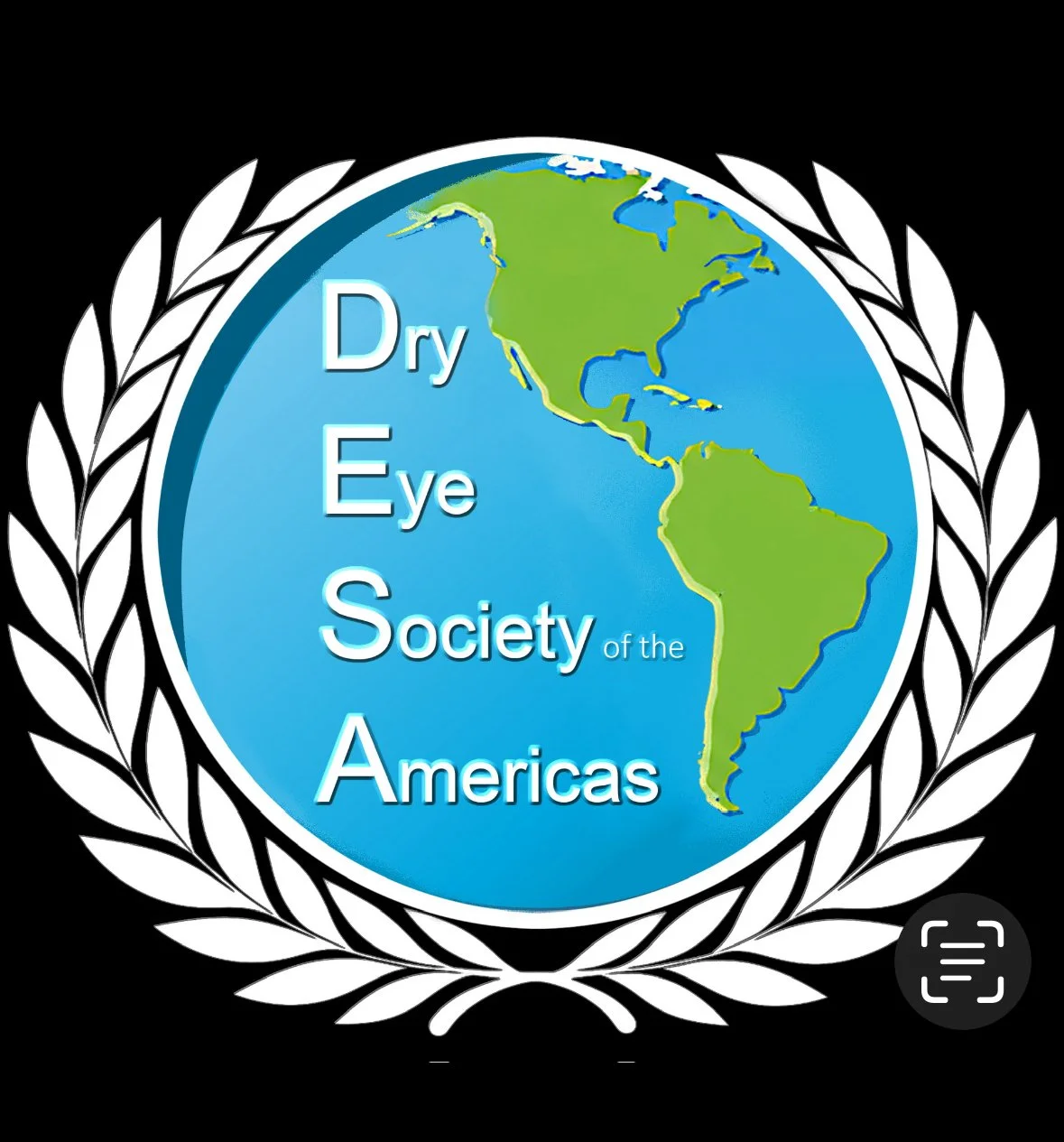What’s New From The Annual Eye Meeting?
I generally attend the yearly American Academy of Ophthalmology, as it is one of the better venues to learn what’s new, to acquire new skills (outside of a residency or fellowship), and to rub elbows with colleagues and friends. This year happened in Orlando last weekend, and it had many memorable moments (apart from the great food and excellent weather).
First, let’s start with me! I’ve been asked to become a board member of the newly minted Dry Eye Society of the Americas (DESA) - logo above. This is indeed an honor, as the fellow board members represent many of the most esteemed dry eye specialists across Europe, Canada and the Americas. It appears the focus (pun intended) will lean towards education of young doctors (residents and fellows), to ensure that they will bring to their practices some of the best tools and protocols we more clinically experienced sages can teach. Our first (informal) meeting is in NYC in early December and the first fully structured meeting will be in July, 2026. Since I’ve seen firsthand how “Wild West” the current World-wide approaches are, it seems high time that this kind of high-level, mentored training becomes available! I’d like to see a board-certified level of training adopted, where patients could expect first-rate dry eye care from those doctors who achieve that certification.
Second (about me) is the invitation I received from the Bascom Palmer Eye Institute in Miami, FL, to speak on radiofrequency for dry eye treatments, at their new-this-year Ocular Surface Summit 3/20-21/26 (in Miami). I’ve found their world-leading teaching staff to be equally passionate about dry eye care and feel equally honored to be asked to help teach what I’ve learned, to others at this hands-on educational forum.
Third, I was able to work alongside the very capable and forward-focused Thermi team (see image below) to help bring their RF device into the spotlight. They are finding a way to bring a first-class device to the market at bargain prices, to help get this level of care out to the masses.
Fourth, I did get a chance to rub elbows with industry giants and gleaned some news about the dry eye pipeline. One that was featured in a talk that made it seem close, was the “Holy Grail” of anti-inflammation at or above the level of steroids, but without many of the steroid-side effects, called Reproxalap: developed by Aldeyra. I posted a bit about this “RASP inhibitor” earlier, here: https://www.eyethera.com/blog/are-there-any-new-eye-drops-for-dry-eye?rq=Reproxalap and while it failed to pass the FDA’s scrutiny in earlier testing, further testing has been very positive and it appears more likely to be available sooner than later. Additionally, Azura’s AZR-MD-001 product to “uncap” Meibomian Glands covered in keratin, passed a phase 2 hurdle study in January of this year and appears poised to become commercially available (again, sooner than later). This study Efficacy and safety of AZR-MD-001 selenium sulfide ophthalmic ointment in adults with meibomian gland dysfunction over six months of treatment: A Phase 2, vehicle-controlled, randomized extension trial showed statistically significant efficacy in improving gland function over placebo with minimal side effects. In discussion with their company leadership, it appears that after optimal improvement, it may be necessary to continue with some degree of “maintenance” where applications nightly will subsequently reduce to once or twice a week (perhaps indefinitely for some) as there is a high propensity for this tough “keratin” tissue to grow back in many cases - but regular applications can keep it at bay (and keep eyelashes looking healthy, strong and supple). I posted on what this kind of treatment could be useful (and some of the clinical causes of Meibomian Gland obstruction) here: https://www.eyethera.com/blog/what-makes-enough-enough-and-is-there-such-a-thing-as-too-much-part-2?rq=azr
Lastly (for medical updates in this post), I was enamoured with the team behind the newest, country-wide-available supplier of Autologous Serum Tears, named OcuBio. This group out of the Bascom Palmer Eye Institute, has found a way to provide these serum tears, without the need for refrigeration of the weekly supply. While I have previously posted on Serum Tears in general - most recently here: https://www.eyethera.com/blog/more-on-serum-tears?rq=serum%20tear it is increasinly clear to me that those patients with the common rough-textured corneal surfaces frequently need a major boost to help repair that surface and these serum tears are often the best initial start. OcuBio packages these serum tears in bottles with the “micropore filters” that trap any bacterial particles from getting to the serum, so that it stays fresh at room temperature for at least a week (and possibly up to a month) without losing significant value. They are also working on providing serum tears from healthy donors, to save dry eye patients from requiring being stuck by needles to harvest their own blood products. This could be especially helpful for those anemic individuals where they don’t have enough (or healthy-enough) blood, or are too needle-phobic. They, along with a number of other companies, are also looking to perfect a method to allow for commercialization of a process to provide Platelet Rich Plasma drops (a higher, more whole-blood-like product that is otherwise similar to serum tears). So the pipeline remains robust!
To schedule an appointment with Dr. Jaccoma, call Excellent Vision at either of these two dry eye offices:
(1) 155 Griffin Rd, Portsmouth, NH 03801 (603) 574-2020
(2) 3 Woodland Rd, STE 112 Stoneham, MA 02180 (near Boston) (781) 321-6463


